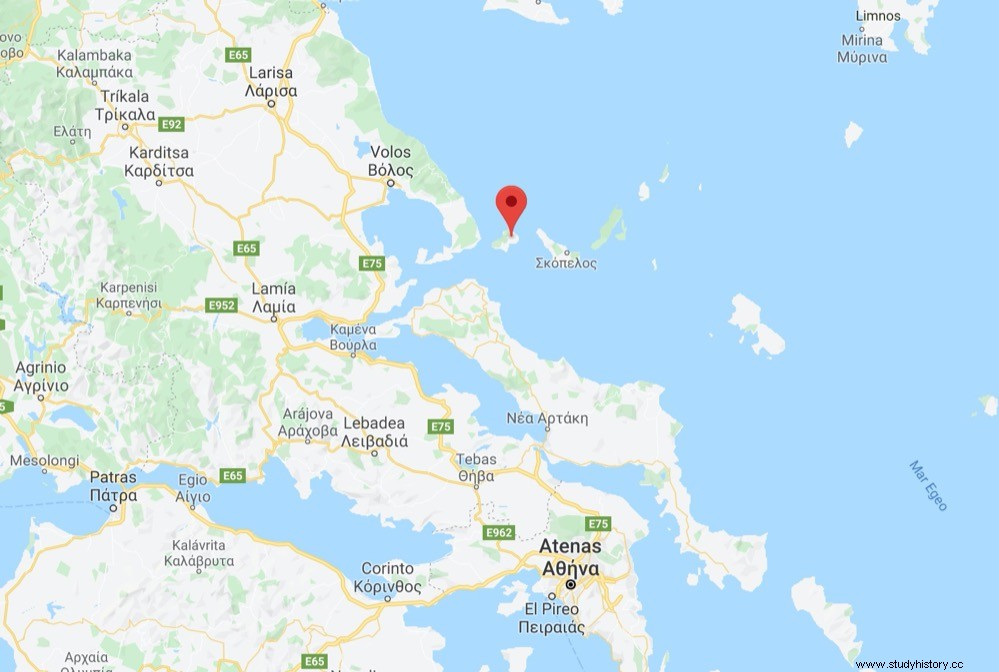The straits between the Greek peninsula of Pelion, in Thessaly, and the island of Skiathos in the Northern Sporades are, due to their shallow depth and abundance of reefs, the site of numerous wrecks and shipwrecks throughout history.
Precisely one of those reefs, called Lefteris, happens to be the place where the oldest lighthouse in the world was located, even before the famous one in Alexandria, dating back to the time of the Medical Wars between Greeks and Persians.

There he found in 1928 Stylianos Lykoudis, who was precisely the founder of the modern Greek lighthouse service, six large blocks of stone submerged about 3 meters deep and about 20 meters to the east of the current lighthouse. Each block weighed between 350 kilograms and 1 tonne, and Stylianos says there were many more, but so deep that they were impossible to recover. The six in question seem to be the same ones that are currently found, according to the Greek Reporter, in the courtyard of the Piraeus Maritime Command (although we have not been able to find graphic documentation about them).
In any case, Lykoudis reported that the blocks were made of dolomite and well worked, and he knew exactly what they were. They belonged to the first known lighthouse, built 250 years before the lighthouse of Alexandria, which is considered the oldest structure built to guarantee the safety of ships, anywhere in the world.
It was based on the words of Herodotus:
The indications given by Herodotus allowed, long ago, to identify the place that he calls Mirmex with the current Lefteris reef, where Lykoudis found the large stone blocks. This one, who knew the history of the Persian tower, did not hesitate to identify the blocks as part of that great structure.
It would have been ordered to be built in 480 BC. by the Persian king Xerxes to warn his sailors that the strait was virtually impassable, with reefs on which even small shallow ships could run aground. The large blocks of dolomite, stacked on top of each other, would have formed a gleaming column of white stone as a warning.
However, and although the truth of the story is difficult to verify, most historians believe that the blocks would belong to a much older structure. It does not seem logical that the Persians carried such heavy stones there in their ships just to build a tower, nor does it seem logical that the Greeks had not previously marked the place, knowing of its danger, to warn their own merchants.
In any case, the mention by Herodotus and the subsequent discovery of the remains, make the place and the collapsed structure the first documented in the world to warn ships of the danger of some waters, that is, a lighthouse.
